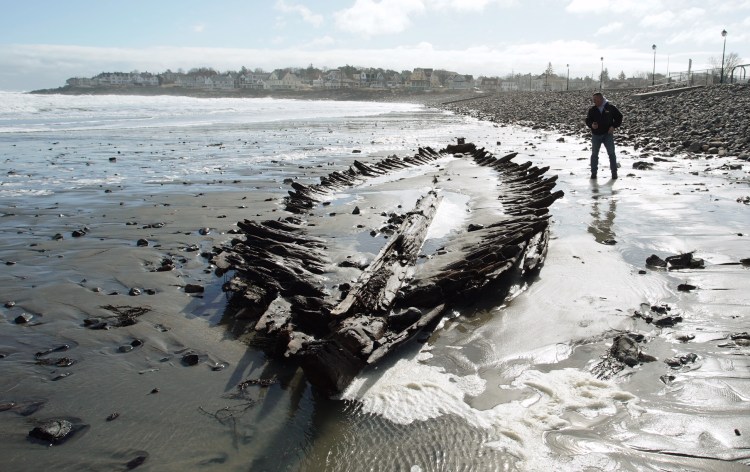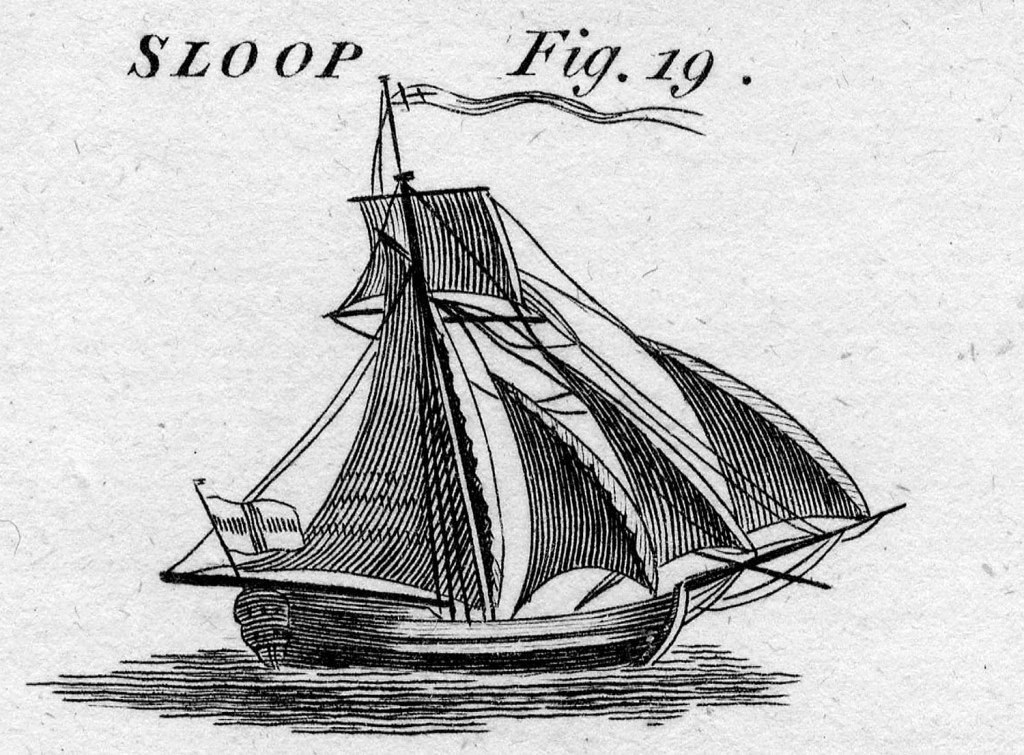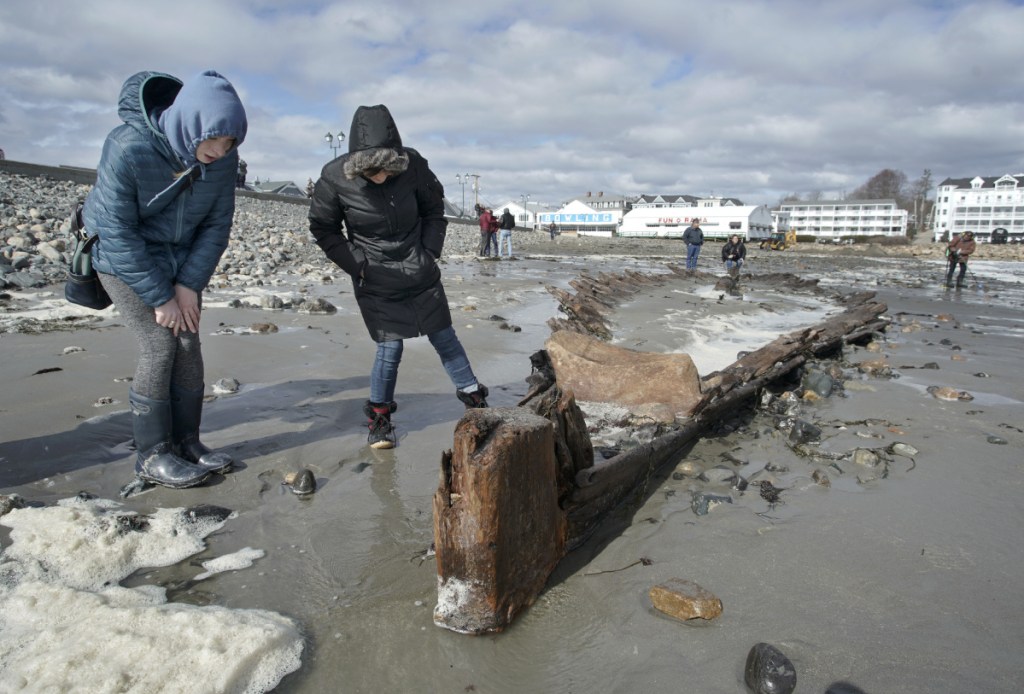A seldom-seen shipwreck buried beneath Short Sands Beach in York was uncovered by rough seas that pounded the shore all weekend.
The skeleton of the ship, believed to be more than 160 years old, was clearly visible in the sand Monday morning, according to the York Police Department.
What’s left of the wooden hull – listed by the state as the Short Sands Beach Wreck – made news in the 1950s after being exposed by a storm. It last appeared after the powerful Patriot’s Day storm in 2007 and following a storm in March 2013.
The 51-foot-long hull is believed to be from a late Colonial or early post-Colonial sloop, which means it would date from 1750 to 1850, according to the Maine Historic Preservation Commission.
A sloop is a sailing vessel with a single mast. Such vessels were common along Maine’s coast and were used for fishing and for hauling cargo such as dried fish or lumber.
There are 1,595 known shipwrecks along Maine’s coast, including 66 in York and its coastal waters.
Most shipwrecks in Maine aren’t visible or, as with the Short Sands Beach Wreck, are seen only after being uncovered by major storms.
The Maine Historic Preservation Commission maintains an inventory of historic sites that includes shipwrecks. The inventory includes measured drawings of the ships to document as much information as possible.
Shipwrecks are usually left where they lie because moving and preserving them is expensive and only limited information can be gleaned from the process, according to Leith Smith, a historic preservationist with the commission.
Eileen Sewall, program coordinator for the Museums of Old York, said in 2013 that little is known locally about the ship at Short Sands, despite the town’s well-documented history of shipwrecks. Well-known shipwrecks along York’s coast include the Nottingham Galley, the subject of the book “Boone Island” by Kenneth Roberts.
The shipwreck on Short Sands Beach first caused a stir in April 1958, when a nor’easter washed 4 feet of sand away and exposed the timbers. Locals thought it could be a Viking ship or a “pinky,” a type of sailing vessel with a pointed, or pinched, stern that was common along the Maine coast in the 18th and 19th centuries.
At the time, historian Edward Rowe Snow came to York to investigate the hull, which was partially covered by sand by the time he arrived. He met with local fishermen and marine hobbyists to learn about the vessel.
Ultimately, most people involved in the discussions agreed then that the boat was a pinky, a common type of vessel in the area that was built with both wood and iron spikes.
Gillian Graham can be contacted at 791-6315 or at:
ggraham@pressherald.com
Twitter: grahamgillian
Send questions/comments to the editors.





